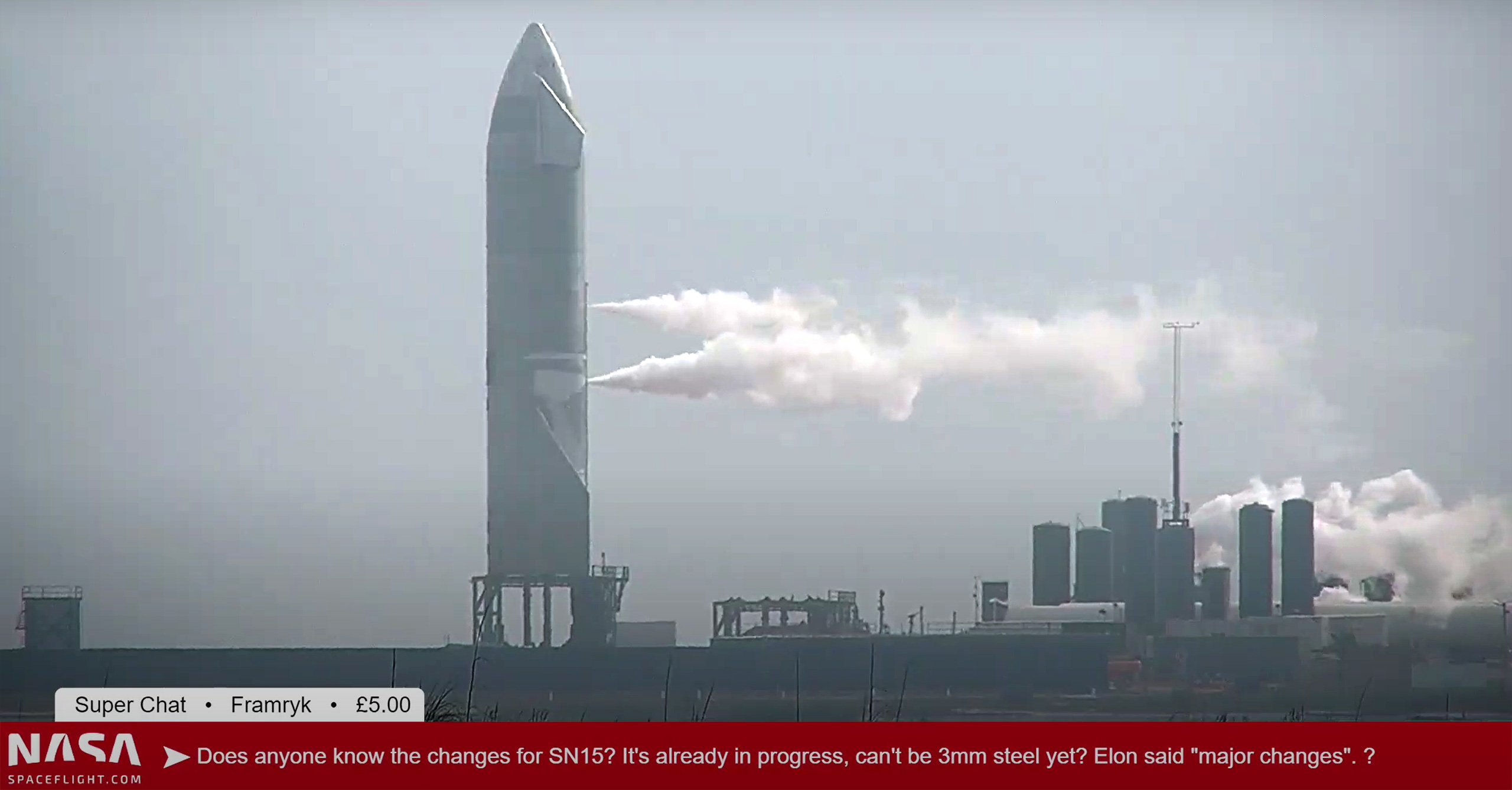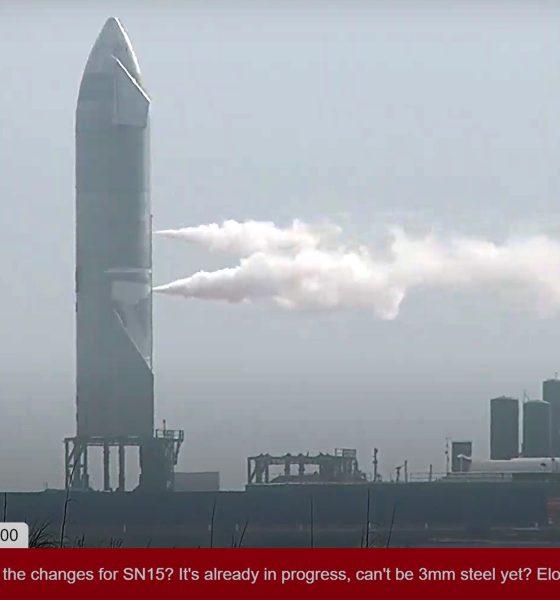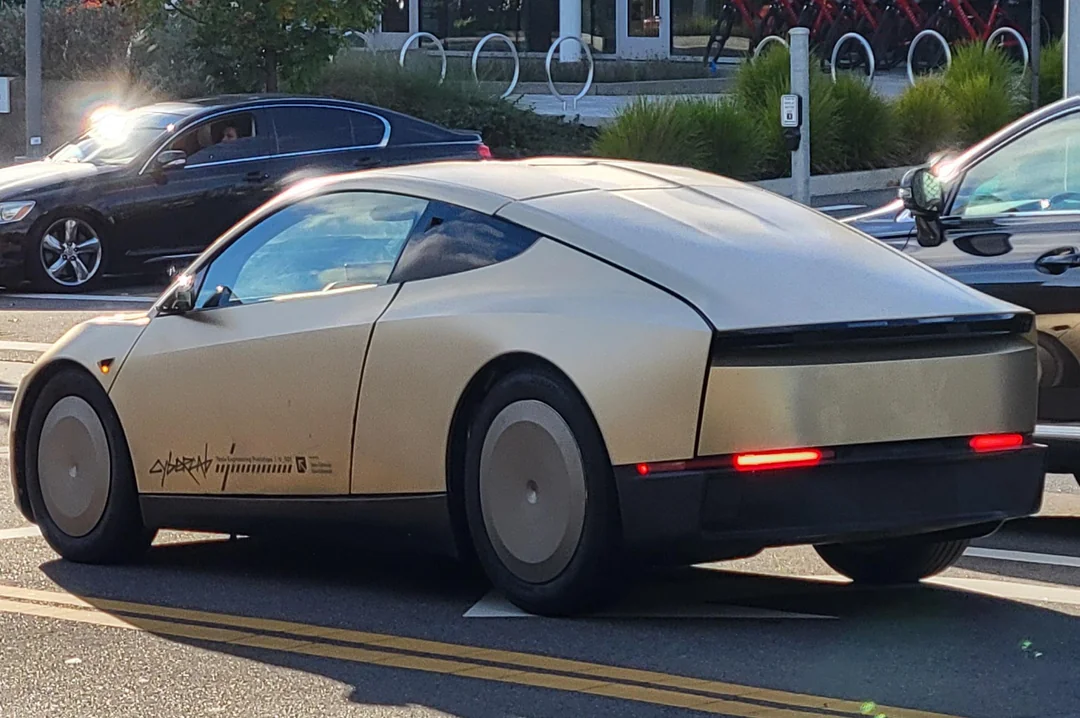

News
SpaceX Starship prototype gets frosty for a launch attempt as early as this week
Update: It appears that SpaceX has completed Starship SN10’s first cryogenic proof test campaign and the company lifted its road closure around 4:30 pm CST, signifying the end of Monday’s testing.
If Monday’s cryo proof was successful, SpaceX has requested possible static fire test windows on Wednesday, Thursday, and Friday (Feb 10-12), though it’s possible another window could be added on Tuesday, February 9th. If Starship SN10 is able to complete a flawless wet dress rehearsal (WDR) and static fire on Tuesday or Wednesday, there is a chance – albeit small – that SpaceX can turn the rocket and pad around for a launch attempt on Friday.
Unfortunately, the FAA also deemed it necessary to reissue SpaceX’s airspace restrictions with a note that SN10’s launch is still “pending [authorization],” adding additional bureaucratic uncertainty on top of the technical hurdles the Starship still needs to navigate to be cleared for flight.
In the midst of what appears to be Starship SN10’s first cryogenic proof test, SpaceX has filed temporary flight restrictions (TFRs) with the FAA for a third Starship launch as early as this week.
Effectively identical to late Starships SN8 and SN9, both of which suffered last-second failures that led to hard impacts and explosions on December 9th and February 2nd, Starship SN10 is a prototype steel rocket and reusable upper stage measuring 50m (165 ft) tall, 9m (30 ft) wide, and some 1350 metric tons (three million pounds) – about as much as Falcon Heavy – fully fueled.
Like its predecessors, Starship SN10 has been outfitted with a cluster of three Raptor engines producing up to 600 metric tons of thrust (~1.3M lbf) and was built as part of a series of four prototypes designed to prove out a new method of rocket recovery.
As previously discussed on Teslarati, SpaceX unexpectedly distributed safety “alerts” to Boca Chica Village residents on Sunday, February 7th, an act that has only ever signified plans to (attempt to) static fire a Starship prototype. However, Starship SN10 has yet to even complete cryogenic proof testing, referring to a common practice SpaceX has used to verify vehicle health with liquid nitrogen, simulating the extreme cold of liquid methane and oxygen propellant without the risk of a violent fire or explosion.
At the moment, SpaceX is in the middle of putting Starship SN10 through its first LN2 cryo proof attempt(s). SpaceX appeared to abort one attempt around 1:15 pm CST and has kicked off a second attempt around this article’s publishing time (~2 pm CST). If SN10 manages to pass a cryo proof in the early afternoon, there’s a chance – albeit limited – that SpaceX will then attempt to recycle for a live wet dress rehearsal (WDR; replacing LN2 with methane and oxygen) and possible static fire attempt later today.
Even attempting – let alone completing – an inaugural cryoproof and static fire on the same day would be an unprecedented feat, so it’s far more likely that the process will take a couple days. Even if that’s the case, however, it’s still possible that SpaceX could make Starship SN10 ready for another high-altitude launch attempt as early as this week. Stay tuned for updates!

News
Tesla Model 3 named New Zealand’s best passenger car of 2025
Tesla flipped the switch on Full Self-Driving (Supervised) in September, turning every Model 3 and Model Y into New Zealand’s most advanced production car overnight.

The refreshed Tesla Model 3 has won the DRIVEN Car Guide AA Insurance NZ Car of the Year 2025 award in the Passenger Car category, beating all traditional and electric rivals.
Judges praised the all-electric sedan’s driving dynamics, value-packed EV tech, and the game-changing addition of Full Self-Driving (Supervised) that went live in New Zealand this September.
Why the Model 3 clinched the crown
DRIVEN admitted they were late to the “Highland” party because the updated sedan arrived in New Zealand as a 2024 model, just before the new Model Y stole the headlines. Yet two things forced a re-evaluation this year.
First, experiencing the new Model Y reminded testers how many big upgrades originated in the Model 3, such as the smoother ride, quieter cabin, ventilated seats, rear touchscreen, and stalk-less minimalist interior. Second, and far more importantly, Tesla flipped the switch on Full Self-Driving (Supervised) in September, turning every Model 3 and Model Y into New Zealand’s most advanced production car overnight.
FSD changes everything for Kiwi buyers
The publication called the entry-level rear-wheel-drive version “good to drive and represents a lot of EV technology for the money,” but highlighted that FSD elevates it into another league. “Make no mistake, despite the ‘Supervised’ bit in the name that requires you to remain ready to take control, it’s autonomous and very capable in some surprisingly tricky scenarios,” the review stated.
At NZ$11,400, FSD is far from cheap, but Tesla also offers FSD (Supervised) on a $159 monthly subscription, making the tech accessible without the full upfront investment. That’s a game-changer, as it allows users to access the company’s most advanced system without forking over a huge amount of money.
News
Tesla starts rolling out FSD V14.2.1 to AI4 vehicles including Cybertruck
FSD V14.2.1 was released just about a week after the initial FSD V14.2 update was rolled out.

It appears that the Tesla AI team burned the midnight oil, allowing them to release FSD V14.2.1 on Thanksgiving. The update has been reported by Tesla owners with AI4 vehicles, as well as Cybertruck owners.
For the Tesla AI team, at least, it appears that work really does not stop.
FSD V14.2.1
Initial posts about FSD V14.2.1 were shared by Tesla owners on social media platform X. As per the Tesla owners, V14.2.1 appears to be a point update that’s designed to polish the features and capacities that have been available in FSD V14. A look at the release notes for FSD V14.2.1, however, shows that an extra line has been added.
“Camera visibility can lead to increased attention monitoring sensitivity.”
Whether this could lead to more drivers being alerted to pay attention to the roads more remains to be seen. This would likely become evident as soon as the first batch of videos from Tesla owners who received V14.21 start sharing their first drive impressions of the update. Despite the update being released on Thanksgiving, it would not be surprising if first impressions videos of FSD V14.2.1 are shared today, just the same.
Rapid FSD releases
What is rather interesting and impressive is the fact that FSD V14.2.1 was released just about a week after the initial FSD V14.2 update was rolled out. This bodes well for Tesla’s FSD users, especially since CEO Elon Musk has stated in the past that the V14.2 series will be for “widespread use.”
FSD V14 has so far received numerous positive reviews from Tesla owners, with numerous drivers noting that the system now drives better than most human drivers because it is cautious, confident, and considerate at the same time. The only question now, really, is if the V14.2 series does make it to the company’s wide FSD fleet, which is still populated by numerous HW3 vehicles.
News
Waymo rider data hints that Tesla’s Cybercab strategy might be the smartest, after all
These observations all but validate Tesla’s controversial two-seat Cybercab strategy, which has caught a lot of criticism since it was unveiled last year.

Toyota Connected Europe designer Karim Dia Toubajie has highlighted a particular trend that became evident in Waymo’s Q3 2025 occupancy stats. As it turned out, 90% of the trips taken by the driverless taxis carried two or fewer passengers.
These observations all but validate Tesla’s controversial two-seat Cybercab strategy, which has caught a lot of criticism since it was unveiled last year.
Toyota designer observes a trend
Karim Dia Toubajie, Lead Product Designer (Sustainable Mobility) at Toyota Connected Europe, analyzed Waymo’s latest California Public Utilities Commission filings and posted the results on LinkedIn this week.
“90% of robotaxi trips have 2 or less passengers, so why are we using 5-seater vehicles?” Toubajie asked. He continued: “90% of trips have 2 or less people, 75% of trips have 1 or less people.” He accompanied his comments with a graphic showing Waymo’s occupancy rates, which showed 71% of trips having one passenger, 15% of trips having two passengers, 6% of trips having three passengers, 5% of trips having zero passengers, and only 3% of trips having four passengers.
The data excludes operational trips like depot runs or charging, though Toubajie pointed out that most of the time, Waymo’s massive self-driving taxis are really just transporting 1 or 2 people, at times even no passengers at all. “This means that most of the time, the vehicle being used significantly outweighs the needs of the trip,” the Toyota designer wrote in his post.
Cybercab suddenly looks perfectly sized
Toubajie gave a nod to Tesla’s approach. “The Tesla Cybercab announced in 2024, is a 2-seater robotaxi with a 50kWh battery but I still believe this is on the larger side of what’s required for most trips,” he wrote.
With Waymo’s own numbers now proving 90% of demand fits two seats or fewer, the wheel-less, lidar-free Cybercab now looks like the smartest play in the room. The Cybercab is designed to be easy to produce, with CEO Elon Musk commenting that its product line would resemble a consumer electronics factory more than an automotive plant. This means that the Cybercab could saturate the roads quickly once it is deployed.
While the Cybercab will likely take the lion’s share of Tesla’s ride-hailing passengers, the Model 3 sedan and Model Y crossover would be perfect for the remaining 9% of riders who require larger vehicles. This should be easy to implement for Tesla, as the Model Y and Model 3 are both mass-market vehicles.









